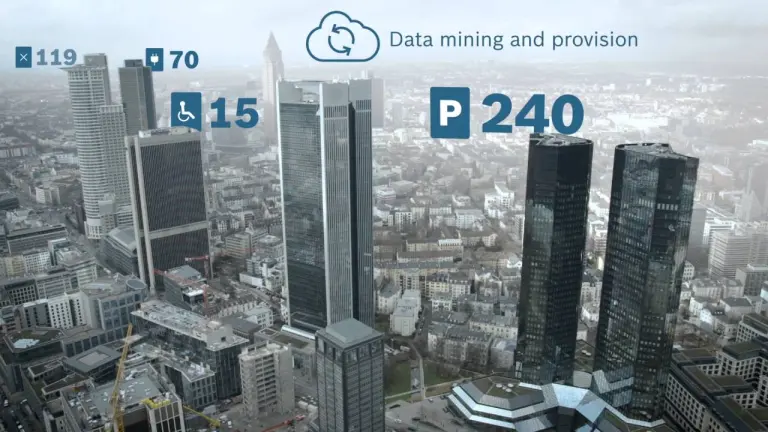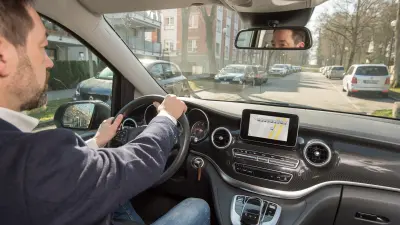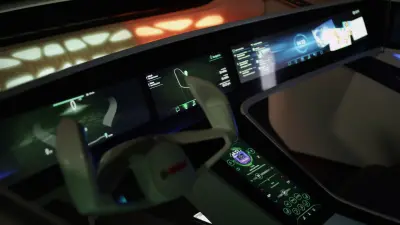Swarm intelligence in the cloud
How we will park in big cities in the future

Parking can be a real pain. Having to search for a parking space costs time, fuel, and nerves. Searching for a place to park in major cities like London, New York, and Rome has long become an unpleasant part of everyday life. Now, connected parking is expected to make it much more stress-free.
Parking as a strain

It takes an average of ten minutes to find a vacant parking space in German cities like Munich, Hamburg, or Cologne. It even takes up to 15 minutes in Italy. Drivers in German cities drive around 4.5 kilometers of unnecessary distance while searching for a vacant parking space. A route that corresponds to 14 orbits around the world can be created in only one city district in just one year. The search for a parking space thus accounts for about one third of all traffic in inner cities. This puts a strain on drivers, roads, and the environment. And air quality has in fact become a major issue, especially in cities that are already over-crowded like London. The Mayor of London, Sadiq Khan, has therefore announced comprehensive measures.
4,5 km
Average driving duration while searching for a parking space
Data: The solution to the parking problem

Connectivity over the Internet of Things now offers support. After all, vehicles will be increasingly connected over the next few years. The management consultancy Gartner learned that around 61 million vehicles per year will be equipped with new Wi-Fi access — ex factory or as a retrofitted solution — as early as 2020. This would be nearly a tenfold increase compared to 2015. “Data is the solution to the parking problem,” says Prof. Graham Cookson, Chief Economist for EMEA at INRIX. Its so-called “Connected Parking” system is based on the swarm intelligence of vehicles that connect via the cloud and make the search faster and more stress-free.
Parking via app.
Today, we often use our mobile phones to park. Start-ups such as the Cologne-based company Ampido or ParkU from Berlin have developed platforms in Germany on which private individuals can rent their parking spaces. Other vendors use barriers to count incoming and outgoing cars and pass on this information via an app. Carmaker Porsche also recognized the opportunities that connected parking offers and recently invested a large sum of money in the start-up Evopark. It replaces paper tickets with a parking card that automatically opens barriers in cooperating parking garages. The respective app also shows free parking spaces and can navigate the driver directly to them if he wants.

Cars report public parking spaces by themselves
The Community supports
Nevertheless, such parking services are unable to track public parking spaces because they don’t have such barriers. This is where the Bosch service Community-based Parking comes into play. With it, the cars can also find public parking spaces by themselves and even report vacant spaces on the roadside. The sensors of the parking assistant are used for this purpose. The information is then entered into a digital parking space card via the cloud and made available to all vehicles that participate in the service. The results appear in the display and can be filtered by price, parking space size, or special requirements such as parking for a parent or electrical charging stations. After choosing a parking space, the user will be navigated directly to it.

Search for a parking space via cloud

Loading the video requires your consent. If you agree by clicking on the Play icon, the video will load and data will be transmitted to Google as well as information will be accessed and stored by Google on your device. Google may be able to link these data or information with existing data.
Park+Ride

Those who prefer can also park their cars at the next Park+Ride car park and head for the city by using public transportation. A pilot project was launched in the Stuttgart region at the beginning of 2016 that informs drivers about vacant Park+Ride parking spaces via real-time traffic data. Sensors were installed in the parking spaces that can detect whether they are occupied. The occupancy data will be evaluated and assessed for whether this real-time information actually convinces more drivers to take buses and trains by June 2018.
The car will park by itself.
The search for a parking space will no longer have to lead to frustration in the future. But much more will be possible by using connectivity and automation functions. Even before the end of this decade, cars will be able to find their way to the parking garage all by themselves. In this case, the driver will only have to park his vehicle in a transfer zone in front of the parking garage and give it the command to find a parking space with his smartphone. Likewise, the car will drive out again when it is asked to. A concert or restaurant visit will then no longer have to end in a dark and windy parking garage.
Valet-Parking without driver

Loading the video requires your consent. If you agree by clicking on the Play icon, the video will load and data will be transmitted to Google as well as information will be accessed and stored by Google on your device. Google may be able to link these data or information with existing data.
Summary
The nerve-racking search for a parking space has become part of everyday life in big cities. New connectivity solutions that significantly reduce the time spent searching and the environmental impact could be the answer.




